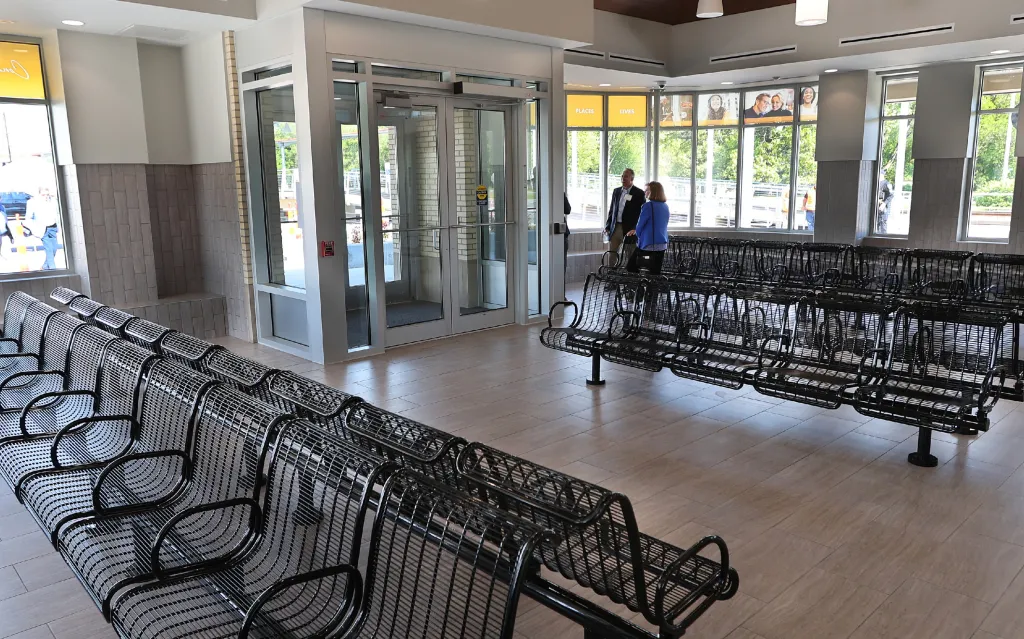Copyright Chicago Tribune

With all of Northwest Indiana’s heavy industry, it’s no wonder that brownfields abound here. But even a strip mall can become a brownfield. A brownfield could also be an empty field or a house that people are dumping in, said Kathy Luther, the Northwestern Indiana Regional Planning Commission’s director of environmental programs. “We need READI times 10 to do the amount of work to make these brownfields ready for redevelopment,” Luther said. It would take hundreds of millions of dollars to eliminate all the brownfield sites in Northwest Indiana, along with a champion for redevelopment funding. That could be the new land development entity. A brownfield is real estate that is abandoned or inactive or may not be operated at its appropriate use, she told NIRPC’s Environment Committee. Indiana further defines it as making expansion or redevelopment complicated by the presence or potential presence of a hazardous substance, a contaminant, petroleum or a petroleum product. “There has to be a risk that the property is creating or helping to create that might be a problem,” Luther said. “Most people might not think a strip mall could be a brownfield, but it could be,” she said. An underground storage tank could be nearby. A car repair facility, factory or empty field? “All of these are brownfields. Sometimes you can tell, and sometimes you can’t.” Brownfields have been in the news lately because the Northwest Indiana Regional Development Authority decided to create a land development entity that would address the proliferation of brownfields in getting land ready for redevelopment. Northwest Indiana has 12 Superfund sites – eight in Lake County, one in Porter County and three in LaPorte County – but that’s far from a comprehensive list of brownfields. Luther zipped through a list of brownfields that have been addressed for redevelopment. Lost Marsh Golf Course and Recreation Area in Hammond is one of the most well-known examples. That development, opened in 2003, sprawls across 322 acres. The total investment was $55 million. Removing contaminated soil for Lost Marsh Estates in Hammond cost $80,000, clearing the way for 14 paired patio homes and five single-family homes. “That was one of the first new housing developments in Hammond in 20 years,” Luther said. The Banc, which turned the former Bank Calumet building in downtown Hammond into a residential building, is another success story. “Yes, we found some contamination, but more on the alley side,” she said. “I’m excited about this one, because it’s a housing project right near the new train station,” Luther said. “If we hadn’t done it, I’m not sure if the housing project would have gone on,” but the brownfield cleanup provides environmental certainty to residents. A new subdivision is going in near the Wolf Lake pavilion, where the old Clark High School athletic field stood. In East Chicago, a new dialysis clinic replaced a former auto parts store At 4400 Homerlee in East Chicago, the property was purchased at a tax sale without due diligence, Luther said. “There were literally squatters doing business in their building that they weren’t aware of.” “Mystery barrels” were found in the building. “There was actually solvent coming out of that facility and under the street,” she said. The city addressed that when it tore up the street for another project. Lakeshore Manor in East Chicago hit the trifecta of previous troubled uses for a property. It was a former dry cleaner, gas station and lumber yard where they treated lumber as the site went through various iterations. It’s now a housing facility. “There’s actually a limit to how many roll-off rental carts you can get,” Luther learned. A lot of money was spent on testing to reduce the amount of soil that had to be removed. “It was very expensive to do all that – $650,000. A lot of that was due to testing,” she said. The former Sheraton Hotel in downtown Gary, right by City Hall, was a see-through building for years. It was finally razed, allowing the land under it to be tested for contaminants. “They put a green garden under there,” she pointed out. Clearing the way for the South Shore Line’s new Miller station took considerable effort. There were 620 parcels screened, just by looking at the paperwork, for potential contamination. At $80 each, that added up. But compare it to $3,500 per parcel to test the soil at each, and it was a bargain. Of the 620 parcels, 83 were identified as having potential environmental concerns. Only one came back clean. “The state wanted this to be just the cost of doing business as part of due diligence,” Luther said. For developers, it can be tempting to build without considering potential contamination of the site. That’s the “if I go to the doctor for this cold, they’re going to find eight other things that’s wrong with me, so I don’t want to go,” mentality, Luther explained. “The question is, what you don’t know can hurt you.” When the RDA drafted its new strategic plan for the next 10 years – the final version is still being polished although its contents have already been explained – President and CEO Sherri Ziller said the RDA plans to create the local development entity as a nonprofit to work with communities across Lake and Porter counties to assemble parcels and deal with potential barriers to redevelopment, including environmental cleanup. At the Northwest Indiana Business Roundtable’s economic outlook program Oct. 31 at Ivy Tech Community College in Valparaiso, Ziller said preparing “challenging” properties for productive use will help boost transit-oriented development in the areas surrounding South Shore Line stations, but the efforts won’t be limited to the transit development districts. The RDA is providing $5 million in seed money for the new local development entity, along with $500,000 from the brownfields revolving loan fund the RDA oversees. Ziller expects the new nonprofit will seek a plethora of grants. “A lot of the pre-work that has to be done to make these properties suitable for development comes from grants,” Luther said. As federal support for brownfield cleanups changes on a political whim at the federal level, the region needs to be more resilient in how to make this happen, she said. Doug Ross is a freelance reporter for the Post-Tribune.



